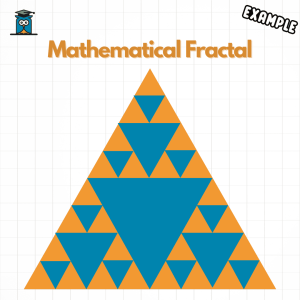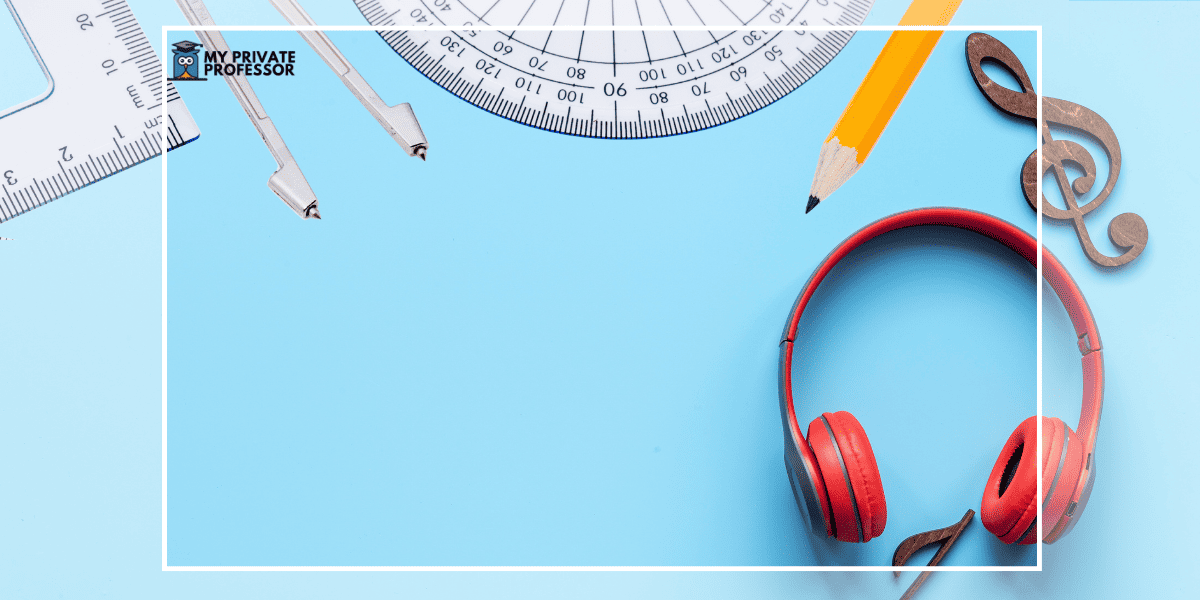Math and music: seemingly, different ideas—but in reality, inextricably linked.
In Ancient Greece, teaching methods combined music theory with arithmetic, geometry, and astronomy in a “liberal arts package” deemed “the quadrivium”.
When I first learned this, I was a little shocked. I mean, in my experience as a student, math was always completely separate from music. And just in my head, I think about math and music as pretty much at opposite ends of a spectrum. A spectrum that’s related to numbers and finiteness vs. art and abstractness.
Essentially, I’ve always considered math as, to some extent, the antithesis of the arts, (which music fits into). But, as it seems, my (and seemingly a lot of our) thinking here is a little faulty.
What is music?
In a nutshell, it’s a bundle of mathematical concepts.
What music is, really, is a series of vibrations that instruments create, which your ear, and then brain, receive. After the instruments create these vibrations together, your brain turns them into beats, rhythms, and tones. And that’s what we think of as musical “notes.”
What we know of as musical notes are actually sounds, which are simply vibrations (or waves of pressure through the air). When vibrations are fast enough, we hear what’s actually a series of waves as one continuous tone.
When dealing with sound, the number of vibrations per second is called frequency. And in music, different notes have different frequencies (which is reflected by the way in which a C-Sharp, for instance, sounds different than an A-Minor).
Each instrument also has a unique combination of frequencies—and when they come together, that’s when we’re hearing the delicious sounds that are harmonies, chords, melodies, and songs.
Pythagoras’ experiments
Pythagoras was an alleged ancient Greek philosopher and mathematician and the creator of the Pythagorean theorem (remember in geometry?). 
Reportedly, Pythagoras carried out experiments related to music tones, utilizing vibrating strings. He analyzed the tones emitted when he plucked strings with different lengths, discovering that some particular ratios of string length produced pleasing sounds, while others created displeasing sounds.
Based on these experiments, Pythagoras ultimately identified the physics of intervals—which in music, is the distance between notes (which form the harmonic system that we use today).
Basic connections between math and music
During the period of Ancient Greece, people actually referred to number theory (how numbers relate to one another) as “harmonics.” And this is because they were interested in the relationships between different (musical) sounds. As Plato believed, the four disciplines in the quadrivium helped us study numbers and patterns in different ways.
In his lecture, accompanied by The Santa Fe Symphony Orchestra, Mathematician and computer scientist Cris Moore explains that as “geometry lets us see patterns in space, music lets us hear patterns in time.”
Cris Moore notes that the most basic connection between math and music is rhythm.
Every musical piece has what we call a time signature. This component provides “rhythmic” information about the piece, such as the number of beats in each measure (single units of time containing a specific number of beats which play at a specific tempo).
In this way, a time signature resembles a fraction—it has one number on top, and one on the bottom (the number of beats in a measure on top, and the note value on the bottom).
And different time signatures produce entirely different melodies.
So these ratios in music are essentially the foundation of what our ears pick up when the music starts.
As we can already see, fundamental building blocks in music draw on mathematical concepts.
The frequency of sound in music is related to math
As mentioned, ancient Greek philosopher Pythagoras, through experimenting on different instruments, discovered that different weights and vibrations create different sounds.
Based on that, we were able to determine that the pitch of a vibrating string (such as a violin string) is directly proportional to its length (another ratio!). And thus, we discovered, we can manipulate pitch by altering string length (just like we can manipulate mathematical equations by altering operations).
When you cut the string in half, the pitch is one octave higher than the original pitch because it takes the vibration half as long to go up the length of the string. So the pitch gets higher as the string gets shorter. Hello, proportions!
In music, we use a scale that consists of pitches, which have fixed repetitions—otherwise known as an octave.
Sound is a vibrational wave, and the frequency (number of vibrations per second) of sound is what defines a musical note. In music, frequency refers to a note’s repetition (how many times it plays) within a time frame.
For instance, if a car tire is spinning and completes one spin in one second, the frequency is one spin per second. Sound oscillates with a certain frequency, and for each frequency, we have a different sound (or, note).
Composers are always using ratios and fractions
When you think about an orchestra, you may think of a bunch of musicians with their instruments, sitting in a semicircle, facing an audience. But there’s one key component we can’t forget about: the composer.
The composer is like the sculptor, guiding and making sure the piece runs smoothly.
In various aspects of their work, composers utilize math. They use fractions to divide a whole musical note into parts—halves, quarters, eighths, sixteenths, etc. And they use ratios to create, understand, and perform their music.
Math and music both use patterns
One of the most major similarities between math and music is the innate use of patterns. You probably don’t think about it much when you’re bopping along to Bad Bunny’s new hit, but it’s just a fact of human nature and music.
That is, the music you listen to probably has repeating patterns, which are the verses and choruses, which are simply repeating beats, tunes, and notes.
Meanwhile, math uses patterns to explain the unknown.
In fact, research has actually found that songs are often more popular when they contain certain mathematical structures (patterns). For instance, Pachelbel’s “Canon” in D, which has popped up in several movies, but is famously known for its presence in weddings, is reportedly popular due to its repetitive structure.
As Suzannah Clark, a Harvard music professor, explains, the song contains a repeated pattern in the bass line which is repeated twenty-eight times in the whole piece before the violins join in and play the pattern along with the bass line.
Demonstrating our inclination to seek patterns on a larger scale, the head researcher, Joseph Nunez, looked at thousands of hit songs, finding that the more repetitive the song, the better it does.
Think about it: there’s a reason why you’ll find that often, it’s those “annoying” songs that stick in your head. The songs that repeat melodies over and over again. And this is why jingles so often use the melodies from these songs—like “Three Blind Mice”, or “Twinkle Twinkle Little Star”.
Math and music both contain fractals
And as it stands, we have an innate desire to seek out and hear rhythmic melodies and patterns. We seek them out because, without even realizing it, we enjoy patterns. That’s why we often find ourselves listening to music that is “catchy”; and why in general, we like puzzles (which often comprise patterns).
Fractals, in math, are geometric shapes containing a structure that contains the same structure in smaller scales (like a large triangle made up of smaller triangles). 
We also have fractals in music. Musical fractals are simply patterns within a piece of music that musicians echo on a larger scale.
For instance, Bach loved to play with symmetry in his music, and many of his pieces contain “backwards” (where one pattern mimics another, oppositely) parts and different forms of symmetry.
When we listen to a melody, we love to recognize a pattern and hear it again in a new form. And we like the element of surprise that comes with learning that certain patterns are more complex than we thought.
Can learning music help students with math?
So music and math may be linked, but that still leaves us with the question of whether or not learning music actually helps us with math.
Some say yes.
- A 2012 study showed that when students completed a math exam while listening to music, there was a forty percent improvement in performance.
- A 2019 study demonstrated that high school students who take music courses do significantly better than non-musical students on math, science, and English exams.
As with most experiments, there may be reasons for your results that aren’t necessarily the cause that you hypothesize. So it’s useful to also conduct experiments that measure brain activity in order to get more clarity.
Research has actually found that certain regions of the brain, such as the anterior corpus callosum—which is hypothesized to play a major role in cognitive ability—is larger in musicians than non-musicians.
In another study, Stanford researchers used fMRI to look at brain activity while participants were given various stimuli, which were simply syllables from words (‘ba’, ‘da’). Participants were trained musicians, people who had played an instrument for most of their lives, and those who didn’t play an instrument.
The researchers discovered that the musicians could distinguish the syllables faster and more accurately than the non-musicians. From that, they determined that there is a link between musical ability and cognitive ability.
When you think about how music really just comprises a bunch of mathematical concepts, this isn’t too surprising. And, we’ve learned that we use the same areas of the brain when dealing with math and music. So performing and regularly practicing music reinforces those areas of the brain that help us concentrate in the two areas.
Final thoughts
As Science American explains, “learning to play a musical instrument relies on understanding concepts, such as fractions and ratios, that are important for mathematical achievement.”
If math is so related to music, why does there seem to be a chasm between the arts and STEM?
When it comes down to it, it seems that math and music share some important, fundamental building blocks. So to the students who face math anxiety on a regular basis, it might be helpful to change your perspective and more frequently consider how math isn’t as foreign a concept as it seems. And if you’re a music student, even better! Time to how you see math—and namely, time to stop separating math from music.







